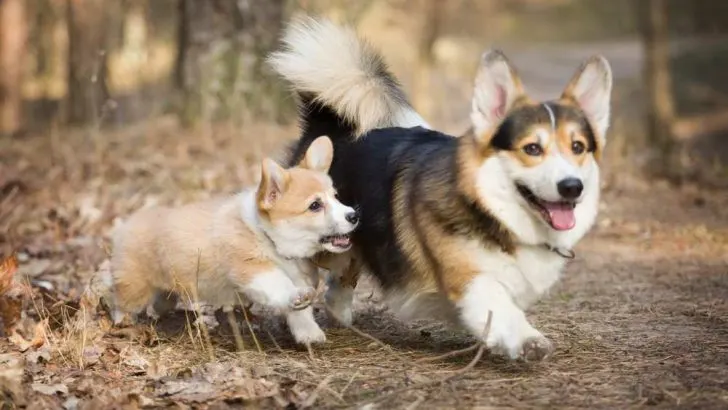After a hard day at work, coming back to an empty apartment seems like the worst-case scenario. Having a pet would certainly make that better, right?
Right! Imagine opening the door when you’re stressed out to hear your Corgi’s paws on the floor? Before you know it, your Corgi is by your feet, barking in happiness.
Suddenly, that feeling is gone – thanks to the Corgi. The Welsh Corgi is the Instagram celebrity dog – since their playfulness and energy make everyone feel better!
The Corgi’s social media popularity alone makes people decide to adopt a Corgi. However, before you make the final decision you should know everything about the Welsh Corgi! For that, continue reading the article!
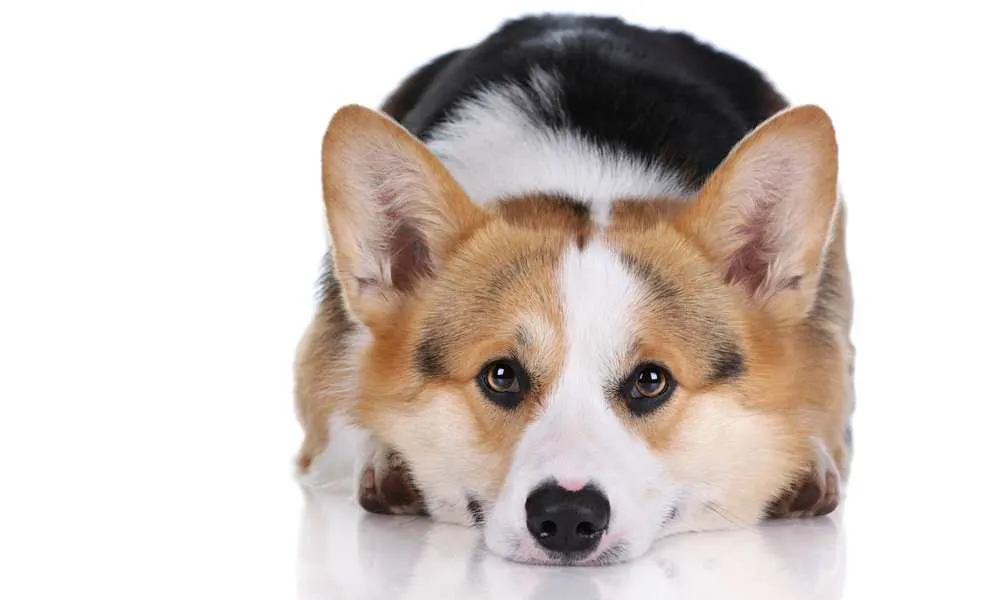
Everything About The Welsh Corgi – Overview
The Welsh Corgi is a small dog breed originating from Wales. The Welsh Corgi is sometimes called just “Corgi” or etymologically more correct “Corgwn”.
At first, the Welsh Corgi was grown and bred for herding purposes. Now, the Welsh Corgi is mainly picked out as a pet because of its playfulness and abilities.
Corgis can complete showmanship, flyball, herding events, tracking, obedience, and dog agility trials. Corgis were originally herding dogs, meaning they still have herding instincts – so they can compete in herding events.
Those herding events are known as “mad run”, or herding trials. A long time ago, herding wasn’t the only thing Corgis were used for – they guarded children, as well.
There are two different breeds of the Welsh Corgi – the Cardigan Welsh Corgi and the Pembroke Welsh Corgi. They are distinctly named after the county in Wales they are originally from.
While the distinct breeds do seem similar overall – and they have similar coats of fur, they still have some differences. We’ll concentrate on similarities for now, but more words on differences later in the article.
Both breeds have a fox-like head and rather short legs. Since they do have short legs, they are close to the ground, but they don’t have an elongated body like the one on the Dachshund.
The fur’s true colors do not appear right after birth, but rather it takes a few days for the Corgi to reveal its true colors. Their fur is water-resistant and sheds around two times a year – a trait shared by the Cardigan and the Pembroke.
The Pembroke Welsh Corgi is somewhat more popular as a breed. That is partially due to the Queen having over 30 Pembroke Corgis and dorgis. A dorgi is a term used to describe a cross between the Corgi and the Dachshund.
The Welsh Corgi is a small dog breed, as anyone can tell. When fully grown, the average Corgi is around 10 to 12 inches tall. The markings and the fur color differentiates between the Pembroke and the Cardigan.
Both breeds fall into the ancestors of the northern spitz. They originated from the same ancestors that gave the breeds like the Samoyed, the Keeshond, and the Pomeranian.
The breeds are fairly similar and originate from entirely different places. Interbreeding the two breeds has been suggested as a way to explain why the two breeds are so similar for centuries now.

History And Origin Of The Welsh Corgi
The Welsh Corgi was bred and trained as a herder dog, mostly used for herding cattle. There are various types of herding dogs, but the Corgi is referred to as a heeler in Corgi history.
Heelers are herding dogs that nip at the heels of the larger animals – cattle, to keep them moving forward. Maybe that got you wondering how the Corgi avoided getting attacked by the cattle.
That’s where the Corgi’s build works to its advantage – the Welsh Corgi is very short and has short legs. The agility combined with the small body let the Corgi avoid the cattle’s hooves with ease.
The term Corgi comes from the Welsh language. It means dwarf or cur dog, which is used as a descriptive term for the external appearance of the dog. It was never intended as an insult for the dog’s small build.

Origin Of The Welsh Corgi
The folk legend about the origin of the Corgi comes from the story that this dog breed came as a gift from the woodland fairies. The marks on the fur coat were made from the harnesses and saddles used by fairies.
The ancient story tells about two children running in the forest and seeing the funeral of a fairy. Other fairies were mourning and they gifted the children two corgi puppies. The children carry the puppies back home, and that’s how the breed became popular.
Some stories even speak about the Corgis being warhorses for fairies. The Corgis became herding dogs for humans only later on.
To support this story, there is a line of rough fur on the base of the Corgi’s haunch. That’s the saddle line from when the fairies rode the Corgi, according to the ancient story. Of course, this legend is nothing more than that – a legend.
The Pembroke Welsh Corgi is originally from the county of Pembrokeshire in Wales. The Cardigan Welsh Corgi is from Cardiganshire, also in Wales.
These two historical counties are geographically adjoining. Since there is a significant distance between the two areas, this may have been the reason why the breeds developed differently.
On the other hand, there is another theory why the Pembroke and the Cardigan developed differently. The reason is that they come from different places – but again, this is just a theory.
The Pembroke Welsh Corgi was imported from the Flemish weavers, somewhere around the 10th century. Other sources and theories state that the Pembroke Corgi originates from modern-day Germany and central European herding breeds.
This indicates that the Pembroke Welsh Corgi evolutionally developed from the Deutsche Bracken or the Dachshund. Of course, these are all just theories and can not be confirmed since we cannot put an exact date on when the dogs were imported to Wales.
On the other hand, the Cardigan Welsh Corgi originated from the same family as the Basset Hound and the Dachshund. The Cardigan Corgi has a longer history than the Pembroke, as it exists for 3,000 years.
The Cardigan ancestors were brought to Wales a few millennia ago, by the Celtic tribes that migrated from central Europe. This dog is believed to be a transition from the Teckel to the Spitz family.
Some stories even tell about the dogs the Vikings brought along when they invaded Wales. The dogs that came with them were bred with the original Corgi, and they produced the Pembroke Welsh Corgi. Like any story, there is no evidence to support this theory like any other, so it comes down to what seems more believable.
Every Corgi, be that Cardigan or Pembroke, was a working dog, a herder, that kept the cattle moving and safe from any potential predators. Since they helped the cattle move to the market or the fields, the dogs were highly treasured.
The Corgi played a very important role at preserving the wealth of farmers because of the work they did. Because of that, the Welsh law was very harsh on the person that would harm or steal a Corgi from a farmer.

First Recognition And Rising Popularity
The Cardigan Welsh Corgi appeared in a dog show in England in 1919. The English Cardigan Welsh Corgi Association was founded in 1926 and they included the Cardigans and Pembrokes together as one breed. The association counted 59 members initially.
The Cardigan and the Pembroke Welsh Corgi were often interbred at that time. Then, the two breeds were only referred to as the Cardiganshire and the Pembrokeshire varieties and nothing more. Later on, the names were shortened.
This caused a lot of conflict among the professional breeders back then. The cause of conflict would mainly be the dispute if one of the judges in the jury was a breeder of one variety.
That judge would favor that Corgi variety, which was deemed unfair. Before the Corgis started to appear in dog shows, the Corgi dogs were never bred because of their looks.
The Corgis were usually only bred because of their herding instincts and their ability to protect the cattle from predators. They were highly useful in protecting the financial welfare of farmers, and that was their only use before the 20th century.
The breeds were judged as two varieties of one breed up until 1934. In 1934, The Kennel Club finally recognized the two breeds as separate types of the Welsh Corgi.
The initial registration in The Kennel Club listed 59 Cardigan Corgis and 240 Pembroke Corgis in the pedigree books. The decision on what the breed of the dog was, was left entirely on the owner of the dog. They picked the breed that was more appropriate according to the dog’s appearance.
Just like today, back then the Cardigan Welsh Corgi was rarer than the Pembroke Corgi. Pembroke Corgi became popular after the Second World War, partially due to the Queen having multiple Corgis as her pets.
In 1953, the Welsh Corgi was in the top 5 popular pet breeds, according to The Kennel Club, right behind the Cocker Spaniel, German Shepherd, and the Pekingese.
The Cardigan was listed in the first list of the Vulnerable Native breeds, back in 2006. The list of vulnerable breeds is for those breeds that register less than 300 puppies each year. It declined significantly up to the year 2010.
Then the list continued the trend to the year 2015. In 2013, the Pembroke Corgis joined the list – and the Kennel Club blamed this on the foreign dog breeds that were imported.
The Daily Telegraph blamed the problem on the docking ban that was introduced in 2007. The docking ban is referred to the ban of tail docking – cutting off the dog’s tail.
The negative trend was stopped in 2015 when the Pembroke registration of new puppies listed an increase of 34%. Featuring Corgis on social media and their growing popularity was to thank for this increase. Because of that, the Pembroke Corgi was removed from the list of vulnerable breeds in 2016.
The Welsh Corgis were introduced to US soil in 1933. They were brought by an American breeder called Mrs. Lewis Roesler.
She was well known for breeding Old English Sheepdogs and decided to start breeding Corgis. The American Kennel Club recognized the Welsh Corgi as the single breed, in 1934.
After the Second World War, the Corgi puppies became more and more popular in the US. Corgis participated in the various contests as well and won some prestigious awards in dog shows.

Breeds Of The Welsh Corgi
As we have already discussed, there are two breeds of the Welsh Corgi – the Cardigan and the Pembroke. However similar in looks at first, they have their distinguishing traits.
Every Corgi you can spot somewhere has those cute pointy ears and short legs. After all, that’s what they are most known for.
However, after some insight into their differences, you will be able to see easily which Corgi is a Pembroke and which is the Cardigan. One of the easiest things to spot is that the Cardigan Corgi is typically larger than the Pembroke, at least by an inch – even the female pup.
However, there are so many other differences, and we feel that we should cover them all. Let’s start the talk by talking about the characteristics of the Pembroke Welsh Corgi:
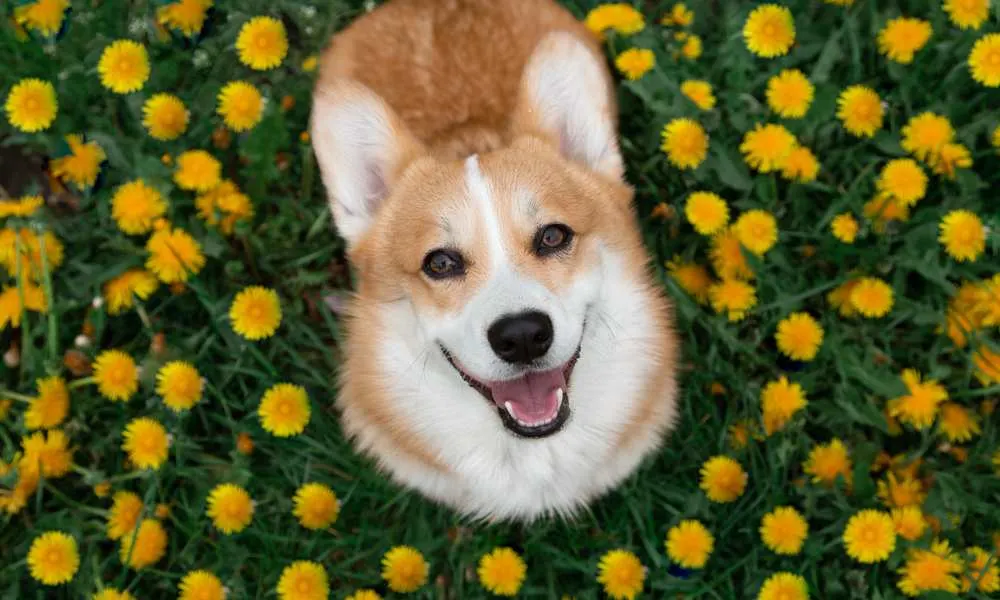
Pembroke Welsh Corgi
The Pembroke Corgi has a fox-like head, pointed ears, and a smaller build. The male dog weighs around 30 pounds when fully grown and the female shouldn’t weigh over 25 pounds. The average life is somewhere between 11 and 13 years.
The distinguishing trait is that the Cardigans have a very small tail. That is also accomplished through breeding and docking.
Earlier in history, the Pembroke was a Corgi with a naturally occurring bobtail – a bobtail is a very short tail. If the Pembroke Welsh Corgi does have a tail at all, it’s curly.
When it comes to breeding, the bobtail was a favorable characteristic, but it wasn’t sought after too hard. That is mainly due to the practice of docking the tail.
Many countries ban docking the tail now. Because of that, breeders are starting to select dogs with naturally occurring bobtails to achieve the ideal looks.
When it comes to the color of the Pembrokes, there are a few colors that occur. These would be tan, fawn, sable, red and black. White marks can, but they don’t necessarily have to appear.
The Pembroke Corgi has two-coat fur, and the coats vary along the entire body. The first coat is the inner coat, it’s shorter and it’s resistant to rougher weather conditions. The outer coat is longer, rougher, and somewhat medium at length. They shed twice a year for two weeks.
The length of the coat varies along the body – it’s longer and usually thicker behind the fore and the hind length, as well as on the belly. The fur on the chest and the neck are more voluminous.
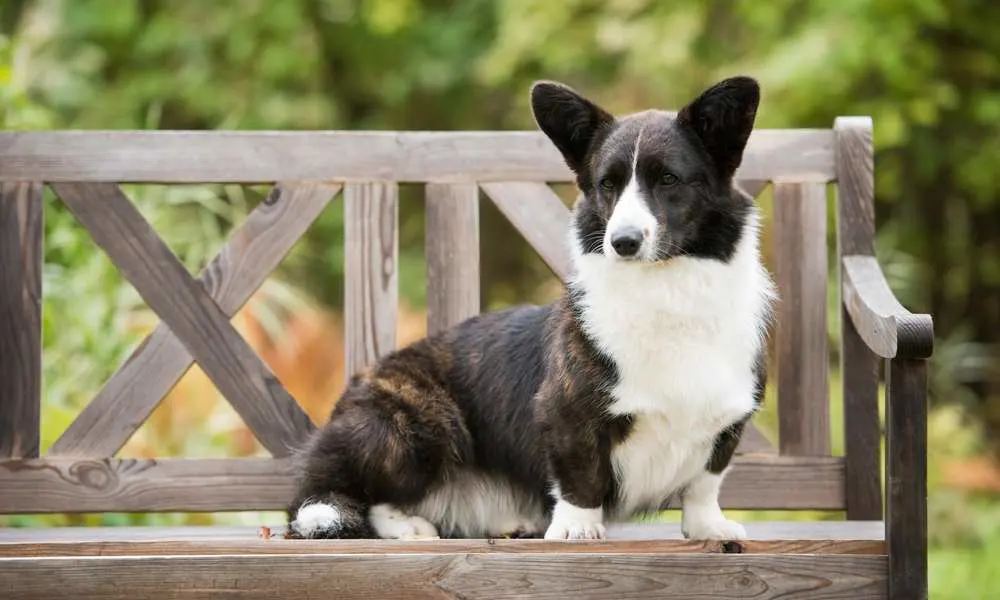
Cardigan Welsh Corgi
Cardigan is less popular than the Pembroke, but it offers some great traits, as well. Since this breed always counted fewer puppies, it’s no surprise that the story is more of the same now. This breed has been on the list of Vulnerable Native Breeds by The Kennel Club since 2006.
The Cardigan Welsh Corgi is somewhat larger than the Pembroke. The male dog should weigh up to 38 pounds when fully grown, and the female should weigh up to 33 pounds.
The fur coats vary greatly, much more than the Pembroke. The color can be red, sable, black, brindle, blue merle, with tan or brindle points. They have white markings far more often on their tail tip, a blaze on the head, legs, chest, neck, or the muzzle.
The length of the fur coat varies throughout the body, just like the Pembroke Corgi. Some Cardigans have soft, very fluffy fur, which is not desirable. When breeding, this is the trait to avoid because the soft fur doesn’t protect the dog against the cold and the rain.
The Cardigans have a double fur coat. The topcoat is longer and much thicker, and the undercoat is somewhat short. They shed continuously, but the shedding is heavier twice or three times a year.
The Cardigan Corgi needs to be brushed often to keep the hair in control. Daily brushes are needed as well as warm baths. The average life expectancy is 12 to 16 years.
Cardigan Corgis have a “fairy saddle” on their back, where the fur is noticeably rougher. We already spoke about this in the History of the Corgis. The name originates from the folk tale that the fairies rode Corgis in Wales, a long time ago.
The Cardigan has a long, straight tail – with long fur on it. That’s also one of the main ways to distinguish a Cardigan from the Pembroke.
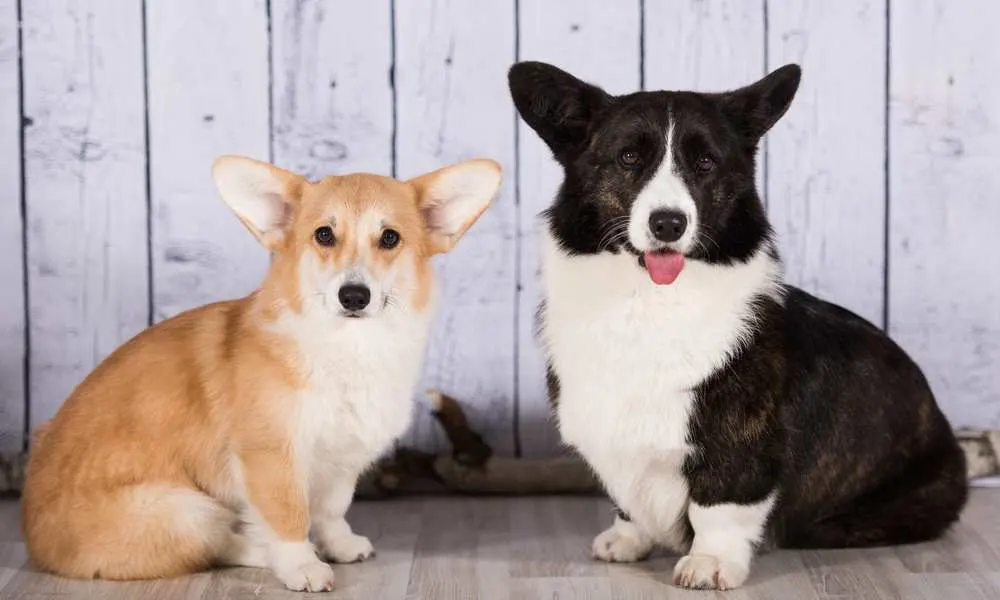
Differences Between A Cardigan Corgi And A Pembroke Corgi
We already talked about some main differences between these two breeds of the Welsh Corgi. The first thing is the history – the Cardigans exist for far longer than the Pembroke puppy.
The Cardigans have been around since the Celtic times – more than 3,000 years ago. On the other hand, the Pembroke breed is much younger since they are around for 1,000 years now.
When looking overall, they are both dwarf dog breeds with large heads and bodies, with short legs. The ears are upright, but the Cardigans have larger and rounder ears than the Pembroke Corgis.
The tail is much different as well – the Pembroke has no tail or a short bobtail. The Cardigan has a fox-like fluffy tail.
We already talked that the Cardigans are much larger – they are usually taller, for an inch or two. Furthermore, the build of these two breeds is different as well – the Cardigans seem curvier since they have bound bones and a sloping rear. The Pembrokes have oval bones and a squared-off rear, so they are looking more linear and rectangular.
When it comes to the color, the Cardigan Corgi has more colors and they can vary more. The Pembrokes are usually tricolor, red, or sable with white marks while the Cardigan Corgis don’t have white marks so often.
Both breeds were originally made to move cattle, but they share a fair amount of other mental traits. For example, they are both very playful and adaptable.
However, the trait that makes them so different is the energy. The Pembroke pups are a bit more playful and they need more activity in tier day-to-day life to thrive.
A Pembroke will suffer if they cannot play and run outside as much as they need to, so keep this in mind if you keep a busy schedule and cannot offer your pet a lot of time outside. A Cardigan Corgi is a little more down to earth and needs less play time.
They are full of energy, but they can enjoy just chilling by your feet while you work. They can certainly appreciate a day spent outside playing and running, but they are fine if they only go out to do their business.
Moreover, the Cardigan is a little more adaptable, since they take their time to figure out how to act in new surroundings. The Pembrokes are more playful and they tend to get excited at any given situation.
Both breeds are easily trained and suggestive to do as you want them to. However, the Pembroke seems to learn a little quicker than the Cardigan Corgi.
One of the things worth considering is that the Cardigan tend to live longer than the Pembroke. That is truly something to keep in mind!
Of course, there will be more on the personality traits in the next section, so read on!
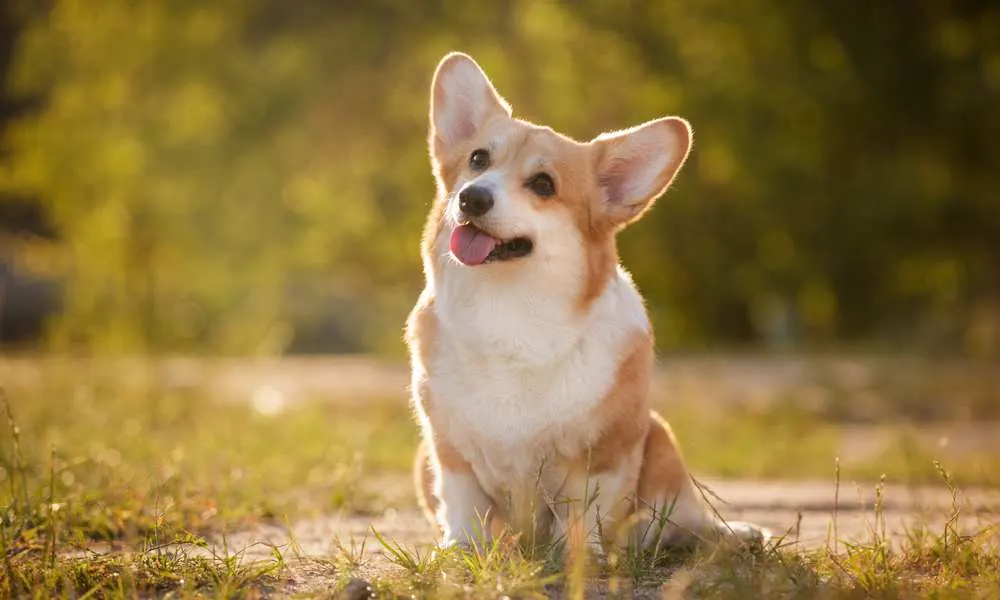
Personality And Temperament Of The Welsh Corgi
Since there are two different breeds of the Welsh Corgi, we will discuss the things that are mutual between the two. If there is a difference in personality traits, we will specifically refer to the breed that has that trait.
The Corgis became popular all over again in the last decade thanks to features on Instagram. Since they are so playful, many people found the videos of Corgis showing affection or playfulness relaxed them.
Furthermore, the Queen had more than 30 Corgis in her rule as Queen, which is one of the reasons why they were such a popular breed after the Second World War. Also, she adopted another Corgi puppy just a few months ago!
Since they are somewhat the Queen’s favorite, they are quite self-confident – much like the larger dog breeds. The Corgis can vary in personality a lot, but they have a few traits that are mutual for all of them.
They are very playful, the Corgis love having fun and going to the park. They are also very smart and loyal to their owner, but they can get stubborn – so they need to be tended to often.
The Corgi is the cutest troublemaker in the world because you cannot stay mad at them when they make a mess. However, with the proper training and enough attention, you can make them bend a little more to your will.
However, do keep in mind the stubborn personality trait. From time to time, the Corgi will do as they like, but that’s all due to their excessive energy!
The Pembroke Corgi may be a little more energized, but both breeds require loads of attention. They need a lot of work and some changes on your part if you want the relationship with your dog to be loving and fulfilling for both sides.
They are rather affectionate, too, so everyone will know if the Corgi likes them a lot. The Corgi is a happy and cheerful dog, with a larger than life personality.
Of course, the personality can vary a lot from Corgi to Corgi, but we are talking about the general traits. The Corgi was once a herder, but now they are more of a family dog.
Every Corgi enjoys being the star of your family, and they are the ideal pet to take camping or traveling – they enjoy entertaining their owners. Since they are rather small, they can tire out after an exhausting day – especially Cardigan Corgis.
However, do keep in mind the stubborn trait if they aren’t given enough attention. If the Corgi feels they aren’t given enough attention, they can become a little strong-willed.
Remember that this isn’t the dog to bend to your will 100%. The Corgi needs some independence, but they need to be learned about their place. In some ways, the Corgi is a big dog on short legs.

Activity Levels
Don’t be fooled that Corgis aren’t high-maintenance and high-energy because of their short legs. They need a medium amount of exercise to stay healthy.
They need lots of activity to thrive – if not, you will see that your pup isn’t satisfied. The best place for a Corgi is an active household that has enough time to play with the dog.
The Corgis are very friendly and they don’t need to be spoiled rotten. They just need an active lifestyle, love, and friendship. The Corgi needs to feel like a loved member of the household.
If you and your family aren’t very active, the Corgi and you may not be the best fit. They need multiple walks daily and some playtime. They don’t need to play for a long time, but they do need that aspect in their daily schedule.
Since the Corgi is adaptable, they don’t need a yard to play in. However, you will need to take the pup out for walks!
The Corgi was originally a herding dog, so do remember they have the herding instinct still. The Corgi needs to keep busy during the day, so you can train them to do various things for you – and they will be happy to do so.

Corgi’s Temperament
The Corgi is one of the ideal choices for your family – there is no doubt about that. They are friendly and playful, but the Corgi can get stubborn and protective.
Again, since the Corgi is a herder, they respond to all kinds of weird sounds. The Corgi is very attentive, and they tend to bark at all new things in their environment. You need to train the Corgi properly because the barking can become annoying not only for you but your neighbors as well.
The Corgi needs to be exposed to other people, dogs, and other animals early in life because of their temperament. That way, they will get used to various new experiences and they won’t bark as much.
Not all barks are a bad sign – Corgis are great at recognizing threats. The barking can be reduced to a certain point. Still, the Corgi will have to bark sometimes, so keep this in mind if you live in an apartment building.
When the Corgi is adjusting to their new surroundings, they can nip at your heel once or twice. With proper training, you will nip this behavior in the bud. The Corgi is very loyal and aims to please and make happy.
Don’t be fooled that the Corgi is easy to deal with – they can become very difficult if they don’t get enough attention. Most of the time, training will eliminate this and you and your family will be able to enjoy having a Corgi as a pet.
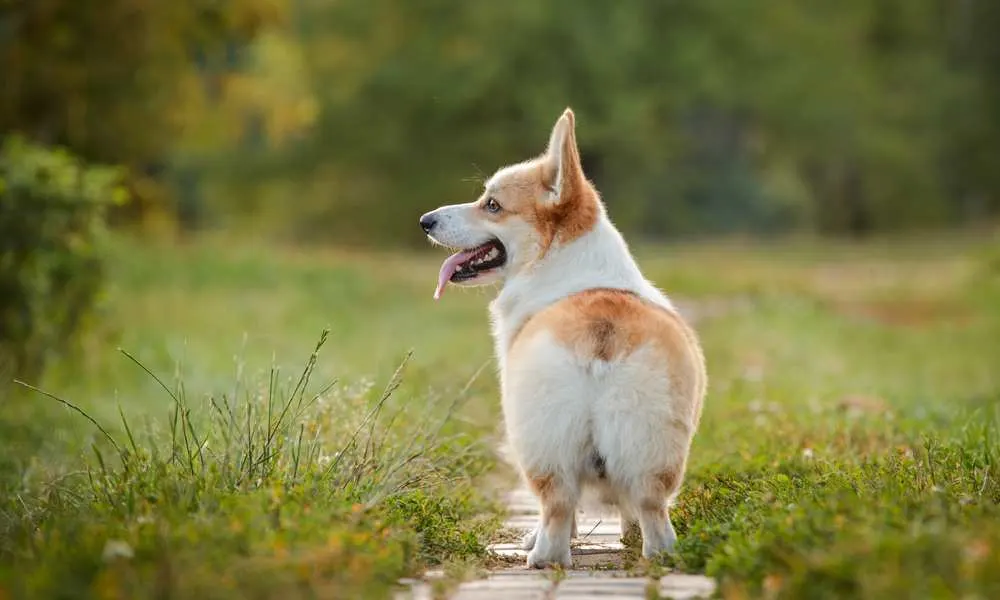
Loneliness And Anxiety
Corgi is one of those breeds that hates being alone and being left alone for extended periods. They can experience severe separation anxiety if they are alone all day.
This can result in barking all day long, and destructive behavior. They can chew on furniture or get into places they are otherwise forbidden to.
Because of their herding instinct, the Corgi can become anxious if all members of the family are spread around the house. The dog will try their best to move you all to the central room of the house so they can keep an eye on all of you.
There are some ways to prevent your Corgi from feeling anxious or lonely when they stay home and you don’t. For example, you can skip saying goodbye or you can tire the pup out before you leave.
We recommend that you don’t leave the Corgi in the yard when you go to work. You risk the Corgi escaping to chase an animal or something they saw, or just barking all day and annoying all of your neighbors.

Is A Corgi A Good Friend To Other Pets?
This is an important question if you already have pets and you’re thinking of adopting a Corgi into your family. Also, worth considering if you have a Corgi and are looking for more pets. Please keep all these notes in mind!
When training your Corgi while it’s still young, it’s important to socialize the pup in time. If the Corgi doesn’t become socialized when young, the dog could be hostile to other animals, even small children.
The Corgi must develop good relationships with other dogs or pets in the family. It may take some getting used to if the Corgi is the newest addition to the family, but it’s not the worst idea ever.
It could be good since the Corgi will socialize from an early age. But, keep your patience in order first, since it can become a bit of a hassle until the pets learn to live with each other.
On the other hand, if the Corgi isn’t properly trained, they can become very hostile with other dogs and animals in general. Corgis do work great with domestic animals and livestock.
They can become friends with all kinds of animals, but they need to get used to the situation first. In this question, the Pembroke Corgi is more hostile, while the Cardigan will take some time to assess the situation and react. The Cardigan won’t look away from a fight if they feel threatened by other animals, though.

Is Corgi Dangerous For Small Children?
Well, no – Corgi is considered to be a friend for small children. The Corgi can work perfectly with families, even if the children are under five years old.
The Corgi does have a certain temperament and it has a stubborn trait. That can pose a difficulty when the dog is dealing with children. Some people state that Corgi isn’t the best fit for families with small children, so keep this in mind.
Your beloved Corgi can see the children as their cattle and they may even nip at them to get them to move. With training, this behavior can be eradicated before your Corgi even has the chance to nip at anyone.
Furthermore, since the Corgi is very reactive to unfamiliar noises, they could be agitated by the noise the children make. If you’re worried about this, it may be best to consult the breeder about the parents of the Corgi puppy and how they behaved around children.
All in all, your safest bet is to wait until your children are over five before you add a Corgi to your family. If the Corgi came before the children, be on the lookout before the Corgi adjusts to the children. It all comes down to the individual, after all.
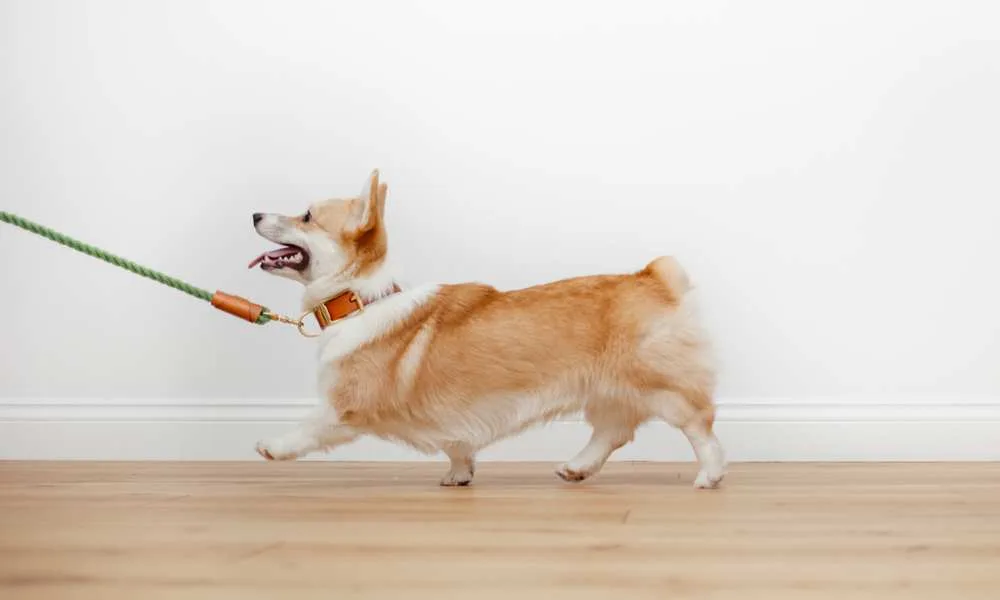
The Welsh Corgi And Nutrition
The Corgi was a herding dog, meaning the Corgi spent a solid time outside working. Along with lots of energy, comes a solid appetite.
The Corgi needs to eat a lot if you take the dog’s size into account. It’s a medium-sized dog, but it’s got a rather large appetite.
Of course, just like all other dog breeds, the Welsh Corgi needs a healthy nutritious diet to thrive. If the Corgi eats a well-balanced diet, it will live longer and better!
The Corgi has an average life expectancy of 12 to 16 years. That is rather much, and it could lean more towards 16 if you feed the dog well.
So, let’s talk about nutrition for Corgis! The Corgi may not be as wild and as energized as it was when it was working as a herding dog, but the instinct remained.
Along with the herding instinct, the Corgi has some genetic coding about food as well. Some food preferences remained, even centuries later.
When the Welsh Corgi was herding cattle in Wales, their diet mostly consisted of beef, rabbit, and various other meats. This was due to Wales being a general hunting area.
The Corgi also enjoyed a solid amount of cabbage, potatoes and carrots, and even some portions of fish, from time to time. Using these foods to feed your Welsh Corgi may be better than anything else, since the pup will enjoy them more, and they will have a better effect on the dog’s health.
Moreover, if you want to add something a little unusual to your pet’s diet, it’s always best to consult your vet before you do. They may have a better idea of what foods are better, or how to add the food properly.
If the Corgi hasn’t enjoyed these foods yet, it may be best to introduce them first. Introducing a good item means adding a small amount to their regular meal the first time, and watching how the dog behaves afterward.
If the dog responds well, you may add more and more each time. That way, you can work up to the full meal and the dog will enjoy it more.
Introducing a food item is used to make sure the dog isn’t put off by the new food. That mostly happens if the food looks nothing like meat, or smells fairly unusual compared to the regular food.
Feeding the Corgi foods the dog was used to eating in their genetic code means they will enjoy it more. However, keep in mind that the dog gets a wide range of balanced-out foods to ensure the dog is truly living their best life.
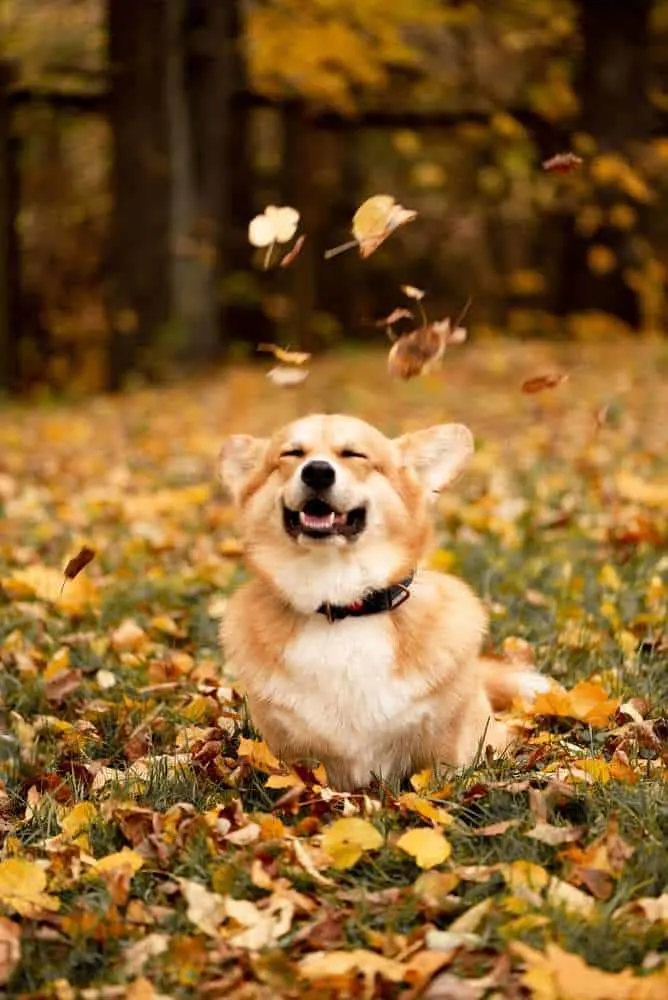
Can A Corgi Be A Vegetarian?
Yes, a Corgi can be a vegetarian! We strongly advise feeding your Corgi a plant-based diet!
Like all dogs, Corgi is omnivorous. Meaning, the dog needs to eat a solid amount of meat and veggies for the best results. Furthermore, the Corgi needs a little more meat than veggies in their diet. The meat comes first, and veggies are just a side.
The perfect balance for a Corgi is:
| Nutrition | Amount in one meal |
|---|---|
| Animal protein | 50-70% |
| Fat | 15-18% |
| Carbs | 25% |
And that’s that. A regular Corgi needs to eat around 870 kcal a day. Don’t go overboard, even if your Corgi seems hungry because it can lead to obesity.

What Is The Best Diet For My Corgi?
Always, and always, your best bet is feeding your Corgi with commercial dog food. It may seem like it isn’t the best idea, but we assure you, it is.
Of course, you should pick a quality food that your dog will enjoy eating and that offers quality nutrition for your furry baby. Commercial dog food is balanced out nutrition for your dog.
We simply think it’s easier to feed the dog commercial dog food. There is nothing wrong with preparing fresh meals for your pup!
However, do keep in mind that dogs need vitamins and minerals that sometimes don’t exist in the meal. That means you will have to invest in some dietary supplements and do adequate meal planning for your pup, to make sure they are getting proper nutrition.
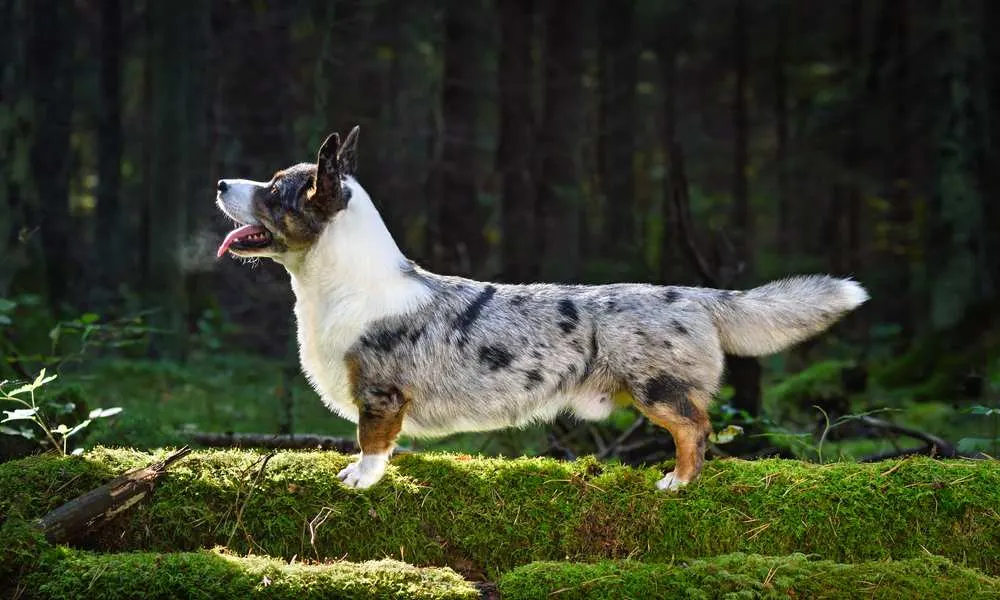
The Welsh Corgi And Health
Many dog breeds are associated with certain health conditions that are characteristic of the entire breed. Does the Welsh Corgi have those characteristics?
We talked about the average life expectancy:
- The Pembroke Welsh Corgi: 11 – 13 years and
- The Cardigan Welsh Corgi: 12 – 16 years.
Learn More: Are Corgis Endangered? Are Corgis Going Extinct?
The Welsh Corgi unfortunately is prone to health concerns. Those health concerns could affect their life quality or shorten their life expectancy. Let’s see what they are:

The Welsh Corgi And Medical Conditions
The Corgi could get intervertebral disc disease. This is a serious medical condition where the cushion discs between the bones of the spine bulge or burst.
This is more commonly known as herniated or slipped discs. Then, the discs can press on nerves running through the spine. This causes pain, nerve damage, and even paralysis in dogs.
This condition is associated with Corgis because of their short legs. If the Corgi is even the slightest bit overweight, that puts pressure on the dog’s body.
Intervertebral disc disease commonly appears in ancestors of the northern Spitz types like the Dachshund, Basset Hound, the German Shepherd, and the Shih Tzu.
The Corgi could also get hip dysplasia – a condition that happens to dogs while they are still growing. The dysplasia results in loosening the hip joint.
Once that happens, it causes dysfunction and pain. As the dog continues to grow, the bone and the cartilage of the hip begin to tear down.
This condition can give the dog muscle atrophy, arthritis, and even limited mobility. This condition is hereditary, so bear in mind the breeder you acquire the pet from.
The Welsh Corgi is also prone to epilepsy. Epilepsy is a brain disorder that gives the dog physical attacks, where the dog may or may not lose consciousness.
This disease can happen due to idiopathic, unknown reasons, or due to genetic reasons. Idiopathic epilepsy is more common in male dogs.
If you can tell your Corgi is experiencing seizures, definitely visit the vet. If the epilepsy is left untreated, the seizures could become more severe and cause brain damage.
Furthermore, the Corgi can get degenerative myelopathy. This is the general term for the disease of the spinal cord or the bone marrow.
There is no exact cause for this disease, and the vet might not even figure it out. Older animals are at a higher risk for degenerative myelopathy.
Once the dog gets degenerative myelopathy, the prognosis is not good. The spinal cord will degenerate over time, and the animal will lose many bodily functions.
Also, the Corgi is at risk for various eye conditions and diseases. Von Willebrand’s disease, progressive retinal atrophy, and lens luxation are noticed more often in Corgis.
If you want your pup to live a long and healthy life, a regular visit to the vet is the best idea. Even if everything seems fine, your vet will give you peace of mind.
Because the Corgi is more susceptible to some conditions, you should consider getting some tests done. Eye checkups and DNA testing may stop some diseases from progressing! Keep your pup safe at all times!
Read More: Are Corgis Expensive To Maintain?
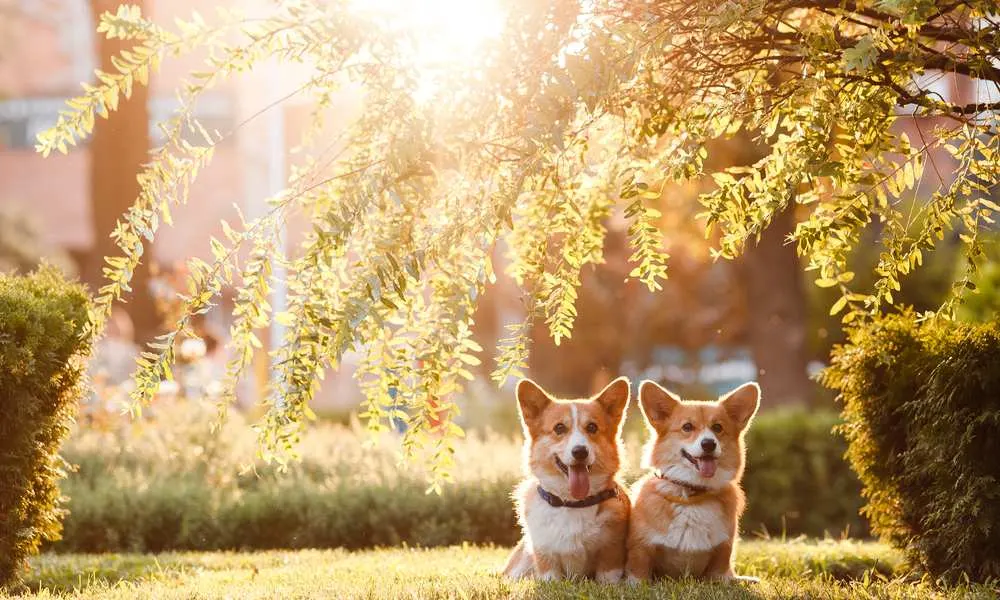
Final Words
To conclude, the Welsh Corgi is one of the best dog breeds out there. The playful and loyal Corgi will give you a better companion than your family could ever!
There are two breeds of the Welsh Corgi – the Pembroke and the Cardigan. While the Pembroke is more popular, the Cardigan certainly has other great traits.
What’s mutual for both is how playful they are. They have the energy of a small dog, but the personality of a large one!
What’s sure is that life could never be boring with a Corgi by your side. The Corgi could be your best friend and an endless supply of entertainment – more than you could ask in your pet!

